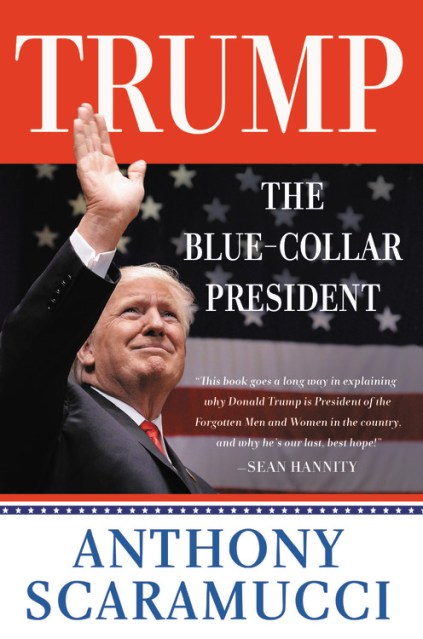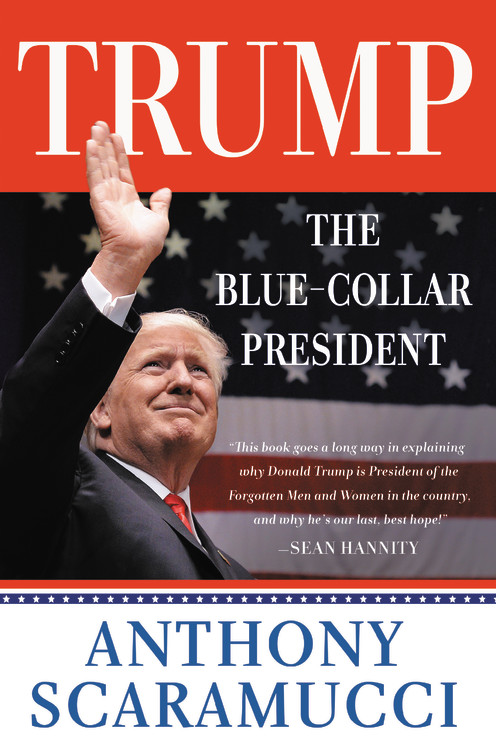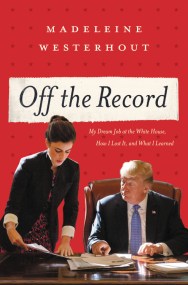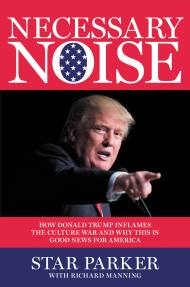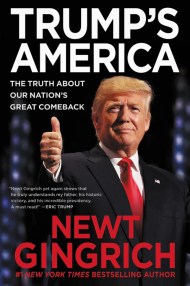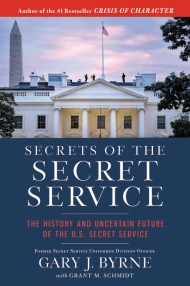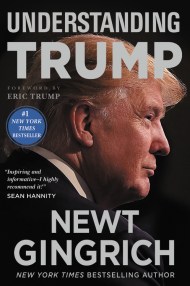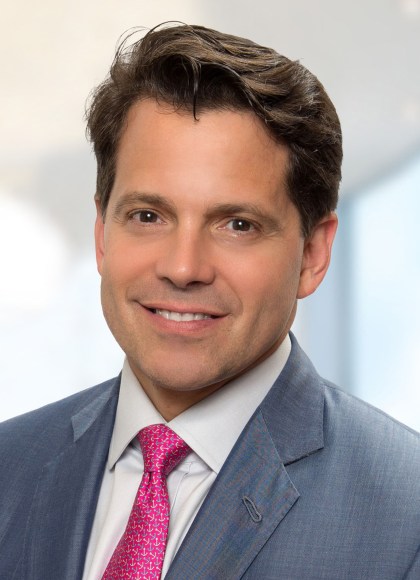Promotion
Use code MOM24 for 20% off site wide + free shipping over $45
Trump, the Blue-Collar President
Contributors
Formats and Prices
Price
$16.99Price
$22.49 CADFormat
Format:
- Trade Paperback $16.99 $22.49 CAD
- ebook $11.99 $15.99 CAD
- Audiobook Download (Unabridged)
This item is a preorder. Your payment method will be charged immediately, and the product is expected to ship on or around April 23, 2019. This date is subject to change due to shipping delays beyond our control.
Also available from:
The rise and fall of the Mooch, which riveted the nation, unfolded like a Shakespearean play directed by Martin Scorsese. In his own inimitable voice, Anthony reveals the juicy details behind his stormy term as White House communications director. He holds nothing back and spares no one’s feelings-including those of the country’s most powerful people.
If political movements are best understood through a single human life, then there is no better life to tell the story of Donald Trump’s rise in America than the Mooch’s.
From Long Island Newsday paperboy, with the largest route in Port Washington, to Master of the Universe, as Tom Wolfe characterized his kind in Bonfire of the Vanities, Anthony’s life was the embodiment of the American Dream. By his own admission, however, he became so involved in his high-octane career and life that he forgot his working-class roots. He wasn’t the only one to ignore the working class. There were neighborhoods like the one he grew up in throughout the country filled with deflated, unemployed, or underpaid people, ignored by elites and politicians-until Donald Trump came along.
It was only when Anthony joined the Donald Trump for President campaign as a surrogate and economic advisor that his eyes were opened to the plight of our country’s middle class. It took a billionaire real estate developer who lived in a tower on Fifth Ave to show him what had happened to the neighborhood in which he’d grown up and communities like it throughout America. It was then that Anthony realized that Donald Trump and his economic policies were the best bet for our country’s future.
A romp of a read, by turns hilarious, touching, and inspiring, Trump, the Blue-Collar President is sure to be among the best books written about the Trump presidency.
Genre:
-
"[Scaramucci] is always didactic but never bombastic, and he employs his self-deprecating sense of humor with remarkable effectiveness, especially in his new book, Trump, the Blue-Collar President. . . . It's as if you're sitting across from Scaramucci and he's talking to you. . . . The book gives an insightful look into [Trump's] popularity and success, because Scaramucci has a real understanding of how Trump thinks."Newsmax
-
"There actually is more to [Scaramucci]-much more-than his brief tenure at the White House. His journey to millionaire hedge fund manager from humble roots as the son of a blue-collar sand hog from Long Island does make compelling reading."New York Journal of Books
-
"This book goes a long way in explaining why Donald Trump is President of the Forgotten Men and Women in the country, and why he's our last, best hope! Anthony Scaramucci uses his own working-class roots to explain why Donald Trump is the working man's President, and how Mooch's own 'New York to the West Wing of the White House' journey embodies that American Dream. Learn the true secret of President Trump's success."Sean Hannity
-
"The Mooch takes us on a great roller-coaster ride-from a working-class suburb, to sparkling Manhattan skyscrapers, to the deepest swamps of our nation's capital. Along the way, we watch an America lost but reenergized under Donald Trump. Insightful, inspiring, and hilarious. A must read. So ordered!"Judge Jeanine Pirro, #1 New York Times bestselling author of Liars, Leakers, and Liberals
- On Sale
- Apr 23, 2019
- Page Count
- 304 pages
- Publisher
- Center Street
- ISBN-13
- 9781546081999
Newsletter Signup
By clicking ‘Sign Up,’ I acknowledge that I have read and agree to Hachette Book Group’s Privacy Policy and Terms of Use
